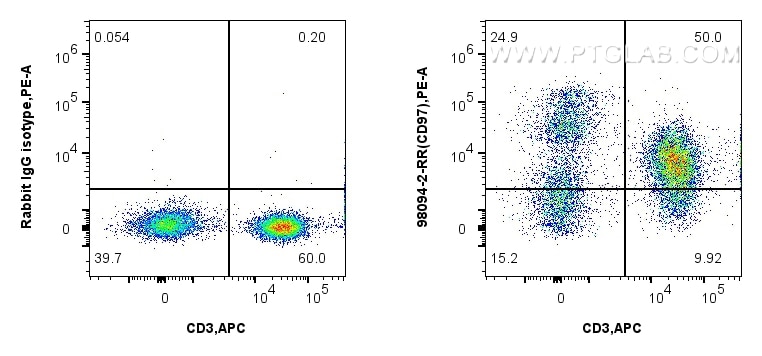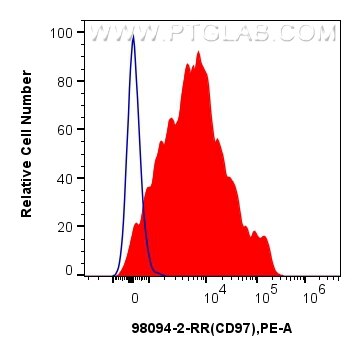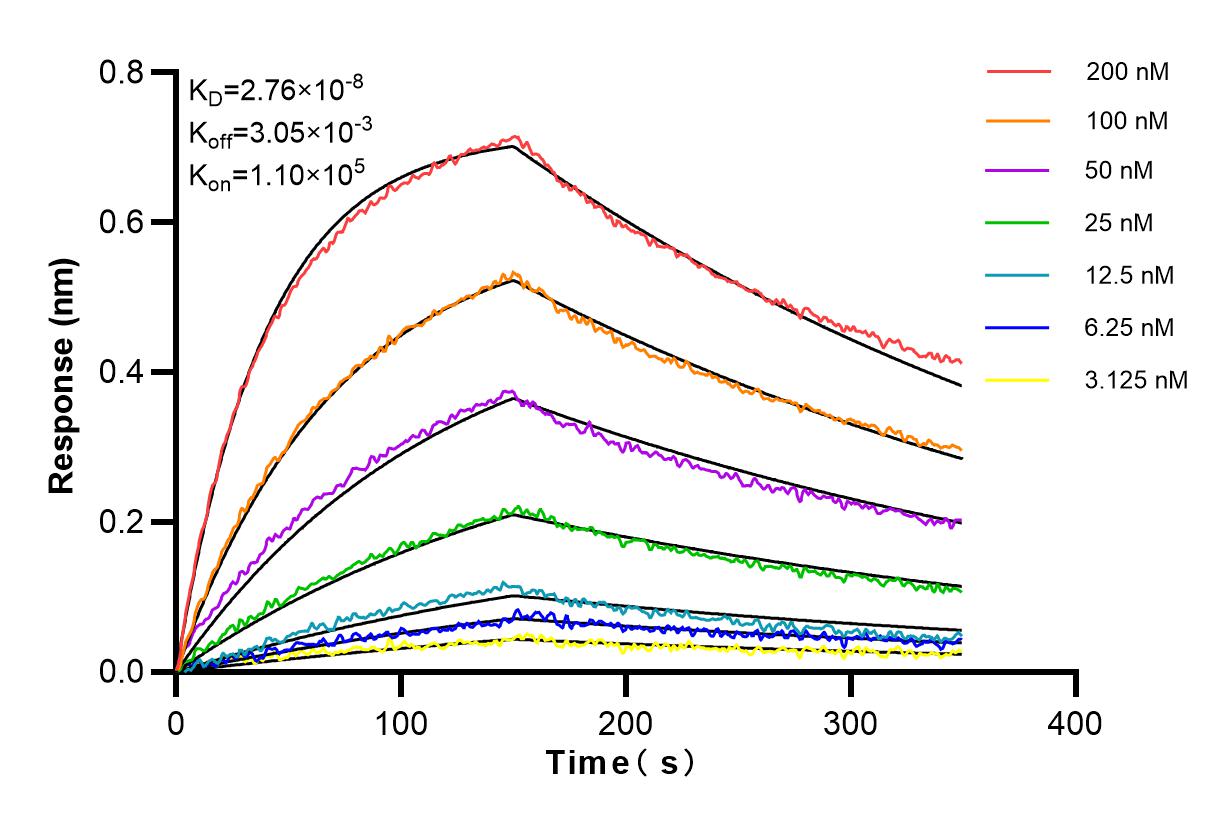CD97 Rekombinanter Antikörper
CD97 Rekombinant Antikörper für FC
Wirt / Isotyp
Kaninchen / IgG
Getestete Reaktivität
human
Anwendung
FC
Konjugation
Unkonjugiert
CloneNo.
241335D8
Kat-Nr. : 98094-2-RR
Synonyme
Geprüfte Anwendungen
| Erfolgreiche Detektion in FC | humane PBMCs |
Empfohlene Verdünnung
| Anwendung | Verdünnung |
|---|---|
| This reagent has been tested for flow cytometric analysis. It is recommended that this reagent should be titrated in each testing system to obtain optimal results. | |
| Sample-dependent, check data in validation data gallery | |
Produktinformation
98094-2-RR bindet in FC CD97 und zeigt Reaktivität mit human
| Getestete Reaktivität | human |
| Wirt / Isotyp | Kaninchen / IgG |
| Klonalität | Rekombinant |
| Typ | Antikörper |
| Immunogen | Rekombinantes Protein |
| Vollständiger Name | CD97 molecule |
| Berechnetes Molekulargewicht | 722 aa, 79 kDa |
| GenBank-Zugangsnummer | BC026690 |
| Gene symbol | CD97 |
| Gene ID (NCBI) | 976 |
| Konjugation | Unkonjugiert |
| Form | Liquid |
| Reinigungsmethode | Protein A purfication |
| Lagerungspuffer | PBS with 0.09% sodium azide |
| Lagerungsbedingungen | Store at 2 - 8°C. Stable for one year after shipment. |
Hintergrundinformationen
CD97 is a member of the seven-trans-membrane subfamily of the class B G protein-coupled receptor (GPCR) group of the epidermal growth factor (EGF) and is present on the surface of lymphocytes, monocytes, macrophages, dendritic cells, granulocytes, and smooth muscle, being a dimeric glycoprotein with a 75-90 kDa intracellular domain and a 28 kDa extracellular domain (PMID: 23969601). It plays a vital role in cell adhesion, migration, and cell connection regulation (PMID: 36464675). CD97 is expressed on T-cells, but rarely on B cells. CD97 might play key roles in cellular adhesion, through connections with other proteins of the cell surface and of the extracellular matrix (PMID: 32781778).
Protokolle
| PRODUKTSPEZIFISCHE PROTOKOLLE | |
|---|---|
| FC protocol for CD97 antibody 98094-2-RR | Download protocol |
| STANDARD-PROTOKOLLE | |
|---|---|
| Klicken Sie hier, um unsere Standardprotokolle anzuzeigen |





